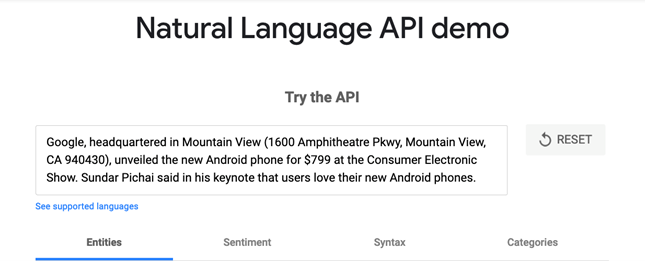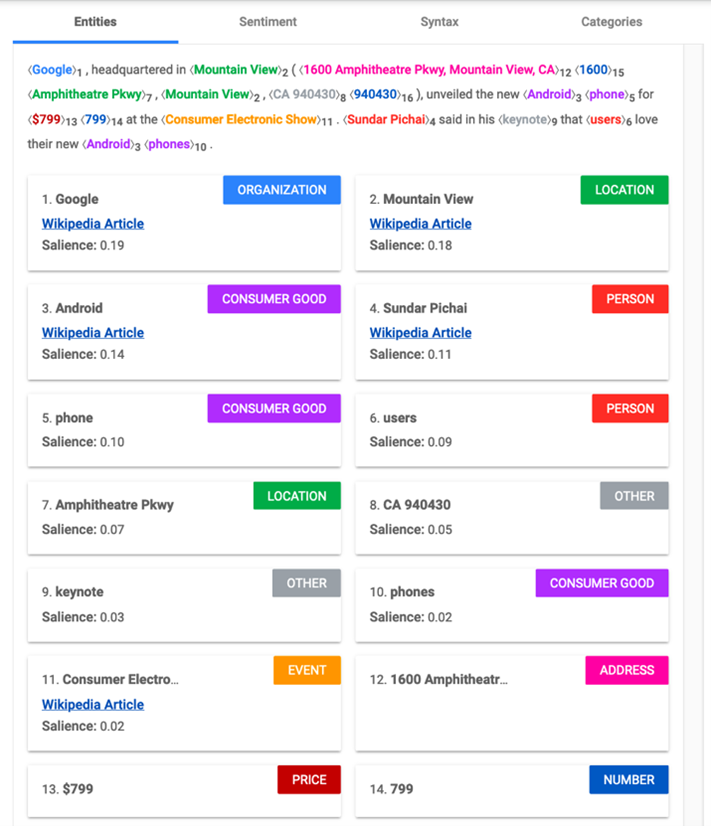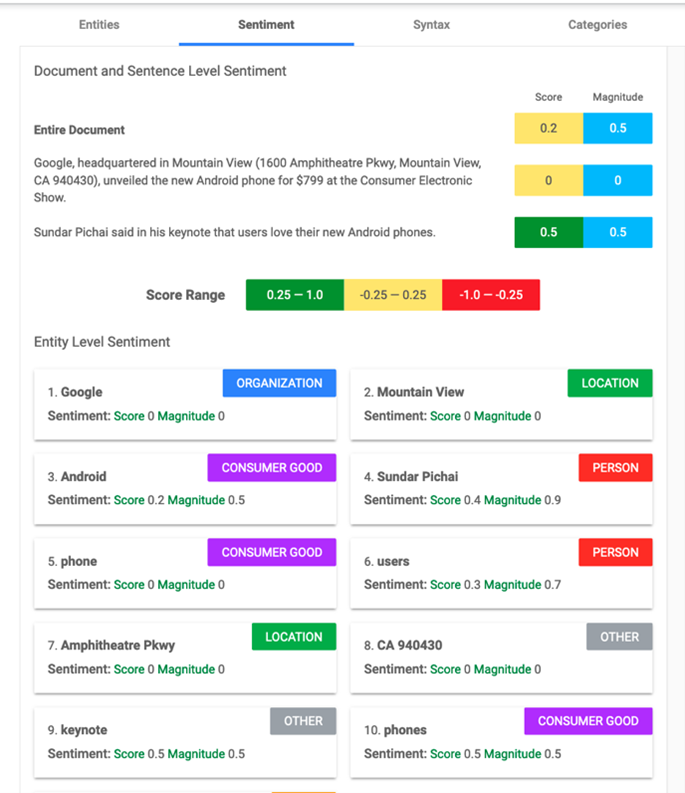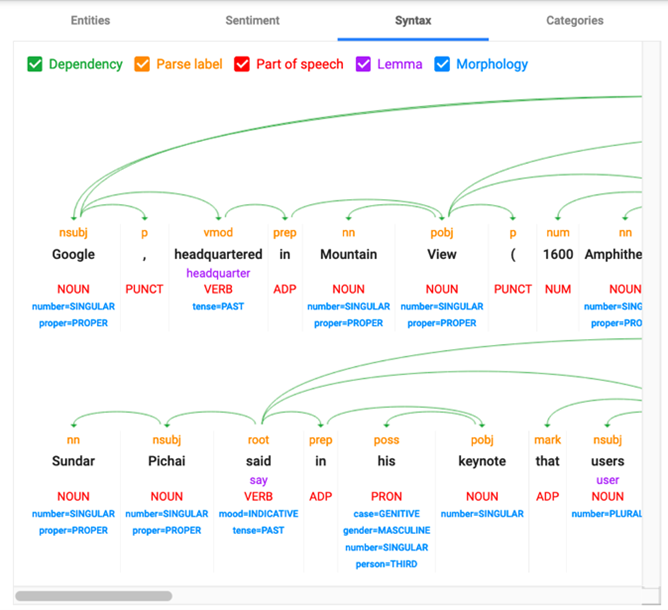How to boost your SEO with Google’s Natural Language API
Konabos Inc. - Konabos
13 May 2021
Marketers know that determining proper searcher intent is crucial for ranking and driving traffic back to your site. Google knows this too, and the search engine has increased its ability to determine searcher intent to provide relevant and useful results in the SERP. With the use of machine learning, Google has developed its algorithm to focus on context, content quality and natural language processing (NLP).
The BERT algorithm and NLP
In 2019, Google rolled out the BERT (Bidirectional Encoder Representations from Transformers) algorithm update, which helped the search engine understand search queries with better precision. Even before this update, Google was already quite good (but not perfect) at providing relevant search results. BERT allowed Google to understand user intent by making sense out of word meaning and sentence structure.
Google gave an example showing the relevance of this update by comparing a pre, and post-BERT search query for “2019 brazil traveller to usa need a visa.” The preposition “to” is essential in understanding the meaning of the query. The previous algorithm would have omitted the “to” and provided webpages for an American travelling to Brazil and not the other way around. BERT was able to grasp the nuance and provide relevant results.
In essence, Google adjusted its algorithm to better understand natural language processing powered by AI to help search engines make sense of what the searcher is looking for. So how do you know if your content is both user-friendly and search-friendly? With Google’s Cloud Natural Language API, you can analyze your content and your competitors and power your SEO to help you rank in organic search results.
The Natural Language tool derives insights from unstructured text using artificial intelligence. It uses Google machine learning to analyze and evaluate the structure and meaning of any online text. This means you can perform a more in-depth analysis of why your competitors rank and what steps you need to take to skyrocket your organic traffic.
How to use Google Natural Language API demo
Google offers a free version where you can analyze and compare both your content and your competitors. If you’re writing any type of content, you’ll need to understand what affects the ranking process and how Google determines what is relevant. Below is the default settings Google uses as a demo. Let’s take a look at this example.
The first step is to find the top-ranking site (Wikipedia is a good source too!) and copy and paste the first few lines into the API analysis text box. No rule states that you cannot copy and paste the entire text, but it requires a lot of patience as the system gathers and analyzes all the data. This tool could be used to get a summary of what Google finds relevant for your chosen topic, so copy and paste the first and last paragraph, and the headers should be sufficient to give you all the information you need.

Entities Analysis
Google breaks down each word and phrase, classifies each into a category, and attributes a salience score to determine its relevance. Since each word is classified by events, objects, people, organization and so on, it’s safe to say that if Google takes the time to differentiate the categories, it most likely plays a vital role in the algorithm.

The salience score (ranging from 0-1) determines the importance of the entity in the text. The higher the score, the more relevant it is to the topic, which means the same word can have two different scores based on the subject on hand. The word pizza might have a higher score and been seen as more critical in an article about party planning than the word cereal or oatmeal.
Although it is never recommended to add keywords just for the sake of adding them (aka keyword stuffing), this analysis allows you to sprinkle keywords that Google deems worthy and relevant into your content.
Sentiments Analysis
Google categorizes content sentiments into; positive, neutral, and negative, with a salience score indicating where on the spectrum the content ranks. Each sentence is given a “score” and a “magnitude” ranking. The higher the score, the more emotionally positive the content is. The magnitude ranking measures the strength of the emotion.
In the default example provided by Google below, we can see that each sentence is analyzed and given a score based on the words used and the entire sentence combined. Positive words (love, fantastic, wonderful) will have a higher score than neutral (with, car, mobile) and negative (hate, danger, disgusting) language.

If the top-ranking page for your keyword is an article with a score range of 0.75, then it’s safe to say that you should be striving to write an article using the same positive tone.
Syntax Analysis
Unlike the previous two categories, syntax analysis has a lot less influence on the SEO aspect of NLP. It can be useful to understand how Google looks at and categorizes words and sentences, but this can also be achieved by using tools like Grammarly and other AI-powered tools. Using good grammar and ensuring a clear and coherent sentence structure that your reader can understand is sufficient to maximize your SEO efforts.

Category Analysis
Categories reveal how Google classifies online text, along with a confidence score. The default example provided by Google is short and has a low confidence score, but a more robust block of text would most likely have subcategories and a higher score. Ideally, you would try to have your content obtain a high confidence score for the categories and subcategories you wish to rank.

The categories section is similar to entities, and both should be used in parallel. The categories analysis could help you keep your content on track and relevant to your field. For instance, if you receive a high score for the /News/Sports News categories and your topic is on California Vineyards, it would be worthwhile doing another revision to have your content align with the intended category.
The implementation of NLP has been pivotal in enhancing the Google experience, and the search engine’s understanding of query intent has brought it to another level. There is no going back to a less sophisticated algorithm. Although NLP is not intensively discussed, it is gaining traction and having a solid understanding of machine learning, the function of NLP and how Google processes language is the future of SEO.

Konabos Inc.
Yay to Konabosing in style! Content tagged with the Konabos handle is produced by two or more Konabos team members.



Share on social media